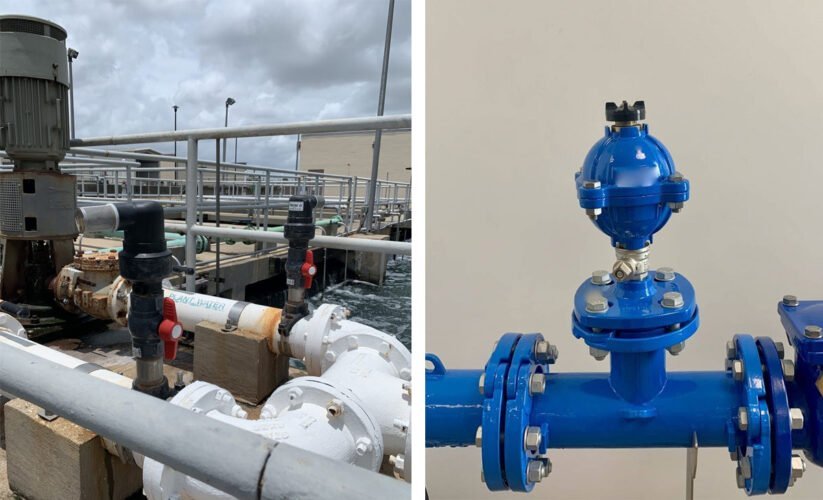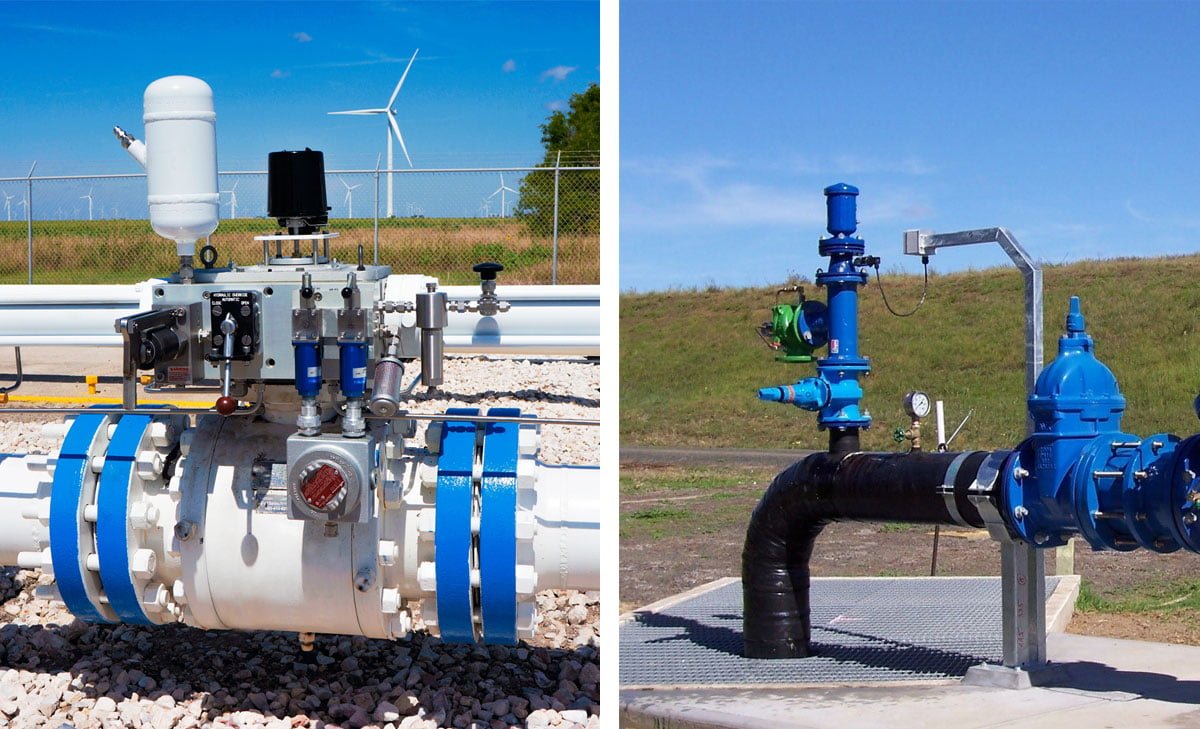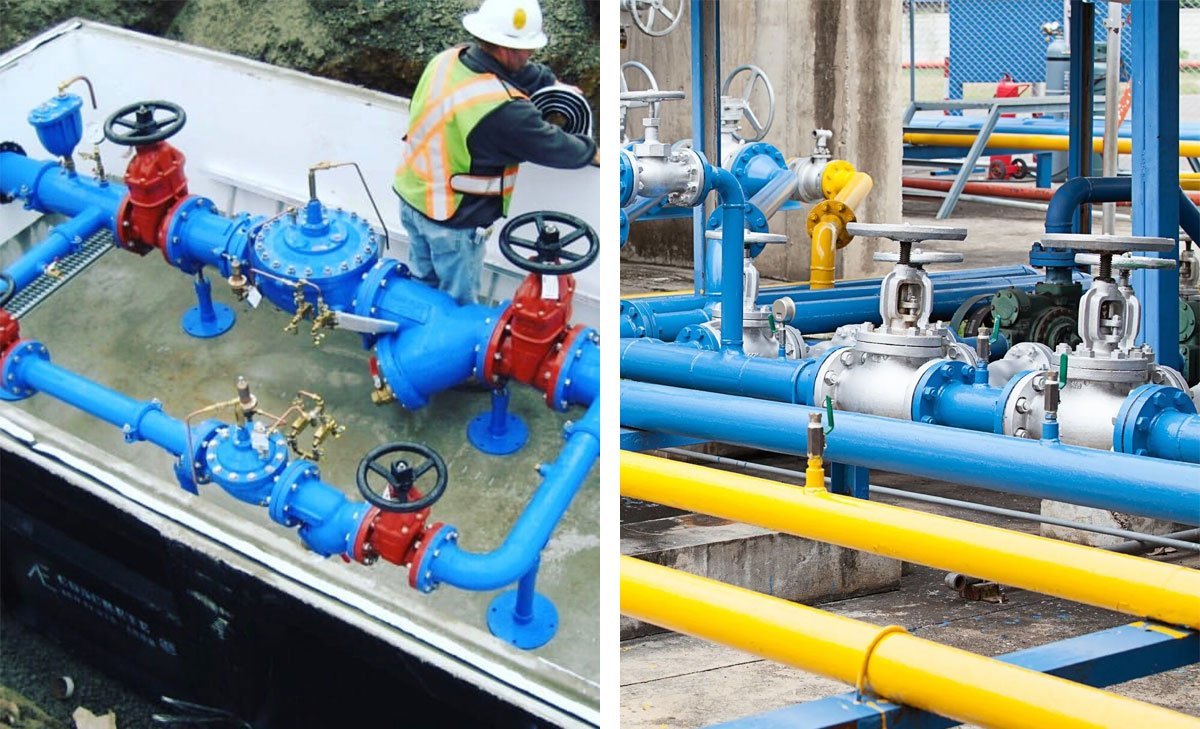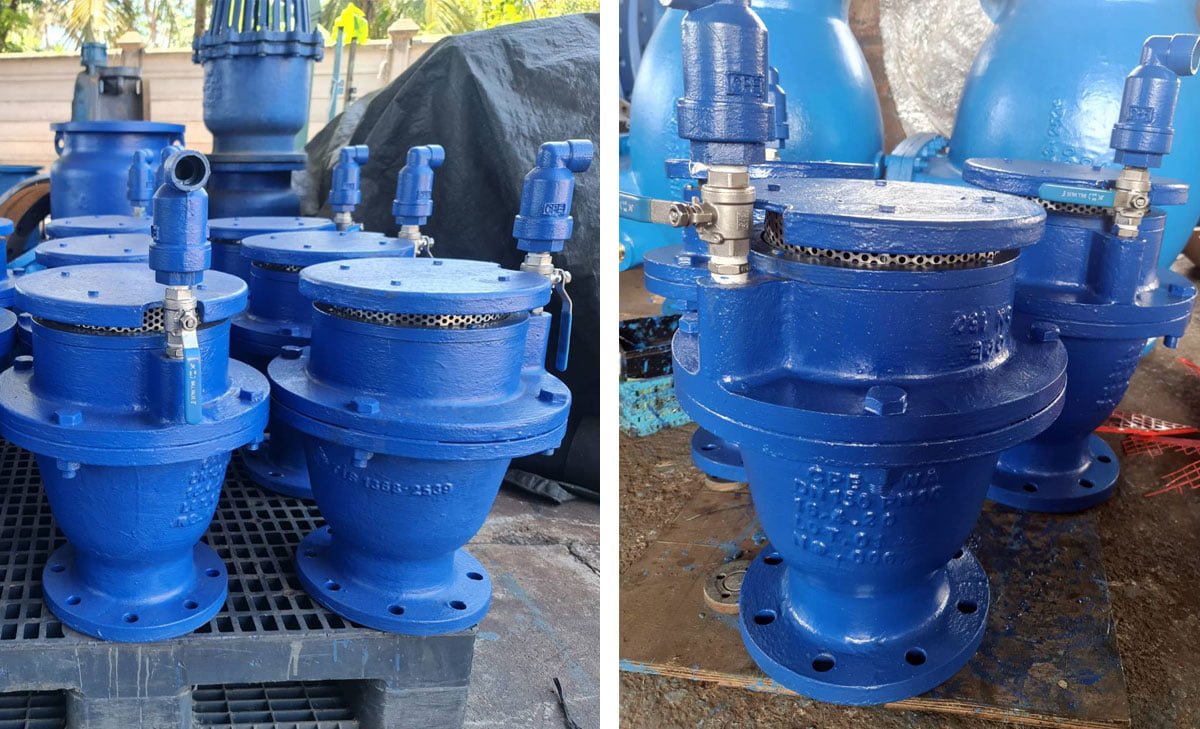Air Relief vs. Air Release Valves: Analyzing the performance differences

Table of Contents
ToggleAir Relief vs. Air Release Valves in Real-Life Scenarios
Air relief and air release valves are crucial components in various fluid systems, and understanding their performance differences is essential for optimizing system efficiency. In this article, we will delve into the detailed analysis of how these valves perform in real-life scenarios. By examining their functionalities and applications, we aim to provide valuable insights into the most suitable applications for each type of valve. Let’s explore the intricate nuances of air relief and air release valves to gain a comprehensive understanding of their performance disparities.
Understanding Air Relief Valves and Air Release Valves
Air relief valves and air release valves serve critical functions in various systems, particularly those involving water or other liquids. Understanding the basic mechanics of these valves and their key functional differences is essential for efficient system operation.
The Basic Mechanics of Air Relief Valves
Air relief valves are designed to release air that becomes trapped in a system during operation. This helps to prevent air pockets from impeding the flow of water or other fluids. When air accumulates, it can cause inefficiencies, reduce system performance, and even lead to damage. Air relief valves typically feature a float mechanism that opens the valve to release air when levels rise, and closes it when the air has been released.
The Basic Mechanics of Air Release Valves
On the other hand, air release valves are specifically designed to automatically release small pockets of air that accumulate at high points in a system. These valves are crucial for maintaining the efficiency and performance of pipelines and other fluid systems by expelling air that would otherwise hinder the flow and cause disruption. Unlike air relief valves, air release valves are typically equipped with a small orifice that opens and closes to release air as needed.
Key Functional Differences
The primary difference between air relief valves and air release valves lies in their intended function. While air relief valves are focused on releasing larger volumes of air that accumulate throughout the system, air release valves are designed to expel smaller pockets of air that collect at specific high points. Understanding this distinction is crucial for selecting the appropriate valve for a given application, ensuring optimal system performance and longevity.

Scenario Analysis: Air Relief Valves in Action
Water Hammer Events in Pipeline Systems
In the realm of pipeline systems, water hammer events can wreak havoc if not effectively managed. This phenomenon occurs when a fluid in motion is suddenly forced to stop or change direction, generating a pressure surge that can lead to pipe damage and system failure. Air relief valves play a crucial role in mitigating water hammer by releasing entrapped air, thereby preventing pressure buildup and maintaining system efficiency and safety.
High Points in Piping and Entrapped Air
High points in piping systems have the potential to accumulate entrapped air, disrupting the flow and efficiency of the system. Air relief valves provide a vital function in these scenarios, ensuring the expulsion of air pockets that would otherwise compromise the overall performance and functionality of the system. By strategically placing air relief valves at high points, the system can effectively manage and alleviate air entrapment, contributing to sustained operational excellence.
Thermal Expansion and Contraction in Systems
In the realm of fluid systems, thermal expansion and contraction pose significant challenges to operational stability. The fluctuation in fluid temperature can lead to pressure differentials, causing potential system damage and inefficiencies. Air relief valves prove to be instrumental in addressing thermal variations by regulating air release, thereby preventing pressure buildups and safeguarding the integrity of the system. By effectively managing thermal expansion and contraction, air relief valves contribute to the seamless operation of fluid systems even under varying temperature conditions.
Scenario Analysis: Air Release Valves at Work
In various real-life scenarios, the effectiveness of air release valves can be observed in water transport, wastewater treatment plants, and draining processes to prevent vacuum formation.
Continual Air Pocket Release in Water Transport
Air release valves play a critical role in water transport systems by releasing air pockets that accumulate during the filling process in pipelines. The expulsion of air pockets is essential to prevent pressure surges, which can lead to pipeline failure. These valves are designed to expel air efficiently, ensuring the smooth flow of water and minimizing the risk of damage to the pipeline.
Air Release in Wastewater Treatment Plants
In wastewater treatment plants, air release valves aid in the removal of entrapped air in the pipelines, ensuring optimal system performance. The continuous operation of these valves helps maintain the efficiency of the treatment process by preventing air buildup, which could impede the flow of wastewater and disrupt the treatment operations.
Vacuum Prevention during Draining Processes
During draining processes, such as emptying a pipeline or a tank, air release valves prevent the formation of a vacuum by allowing air to enter the system as the liquid is drained. This functionality is crucial in preventing negative pressure within the system, which could lead to structural damage or operational issues.
In summary, air release valves are integral components in various applications, facilitating the continual release of air pockets in water transport, aiding in the efficient operation of wastewater treatment plants, and preventing vacuum formation during draining processes. These valves contribute to the overall performance and reliability of fluid conveyance systems in real-life scenarios.
Comparative Performance in Water Supply Systems
Effects on Pump Efficiency
Air release valves demonstrate higher efficiency in water supply systems compared to air relief valves. The design of air release valves allows for the efficient release of air pockets, preventing air accumulation in the pipelines. This, in turn, enhances pump performance by reducing the risk of air locking, which can impede the pump’s ability to maintain optimal water pressure and flow rates.
Maintenance Requirements
In water supply systems, air release valves typically require minimal maintenance compared to air relief valves. The design of air release valves minimizes the risk of debris and contaminants entering the valve, thereby reducing the need for frequent cleaning and servicing. This results in cost savings and operational efficiency in water distribution systems.
Longevity and Durability in Water Systems
Air release valves are known for their longevity and durability in water systems. The robust construction and materials used in air release valves contribute to their ability to withstand harsh environmental conditions and prolonged use. This extended lifespan reduces the frequency of replacements, resulting in long-term cost-effectiveness for water supply infrastructure.

Comparative Performance in Irrigation Systems
Response to Water Surge Events
When comparing air relief and air release valves in irrigation systems, one crucial aspect to consider is their response to water surge events. Air relief valves are designed to release air pockets that can cause water surge, potentially leading to pipe damage. In contrast, air release valves are adept at expelling air from the system, effectively mitigating water surge events and safeguarding the infrastructure from potential damage.
Impact on Soil Erosion and Waterlogging
The impact on soil erosion and waterlogging is a significant consideration in irrigation systems. Air relief valves can help prevent soil erosion by releasing excess air from the pipes, ensuring a consistent and controlled flow of water to the fields. Similarly, air release valves aid in preventing waterlogging by efficiently removing air and maintaining optimal water levels in the irrigation network, thereby safeguarding the soil from water damage and promoting healthy crop growth.
Energy Usage and Conservation
Energy conservation is a key factor in sustainable irrigation practices. Air relief valves contribute to energy conservation by minimizing the need for excessive pumping and reducing the associated energy consumption. On the other hand, air release valves, by efficiently managing the air-water mixture, contribute to energy savings by maintaining an optimal balance, thereby reducing energy usage and promoting sustainable irrigation practices.
Comparative Performance in Industrial Applications
When it comes to industrial applications, the performance of air relief and air release valves can have a significant impact on operations. Let’s delve into how these valves handle chemicals and corrosive fluids, operate under varying pressure conditions, and consider safety and environmental factors.
Handling of Chemicals and Corrosive Fluids
In industrial settings, the handling of chemicals and corrosive fluids is a critical consideration for valve performance. Air relief valves are designed to effectively manage the release of air and gases from pipelines, preventing issues such as air locking and cavitation. On the other hand, air release valves excel in efficiently expelling air from the system to maintain optimal fluid flow in the presence of corrosive substances. Their ability to prevent air accumulation in pipelines ensures the integrity and longevity of the entire industrial system.
Operating Under Varying Pressure Conditions
The capability to operate under varying pressure conditions is a defining factor for the performance of air relief and air release valves. In industrial applications, these valves must adapt to fluctuating pressures to maintain system efficiency and safety. Air relief valves are engineered to handle high-pressure environments, preventing damage to pipelines and equipment. Conversely, air release valves excel in managing low-pressure scenarios, where the expulsion of air ensures consistent fluid flow and prevents performance disruptions.
Safety and Environmental Considerations
Safety and environmental considerations
Case Studies and Real-World Testimonials
Municipal Water Treatment Success Stories
Municipalities across the country have seen significant improvements in their water treatment systems after implementing air relief valves. In one city, the installation of air relief valves led to a substantial reduction in water leakages and an increase in overall system efficiency. By incorporating air relief valves, the municipality was able to ensure consistent water flow, resulting in improved water quality and reduced maintenance costs.
Agricultural Efficiency Improvements
Farmers have experienced remarkable enhancements in their irrigation systems with the use of air release valves. By utilizing air release valves, farmers can regulate air and water flow, preventing air pockets in the irrigation lines, which ultimately leads to more uniform water distribution across their fields. This has resulted in increased crop yields and water conservation, making it a game-changer for agricultural efficiency.
Industrial Application Innovations
In industrial settings, the implementation of air relief valves has revolutionized the performance of various equipment. By preventing air blockages and ensuring optimal performance of pipelines, air relief valves have played a crucial role in preventing downtime and enhancing overall productivity. Industries have reported reduced maintenance costs and enhanced operational reliability, making air relief valves an indispensable component in their systems.
Functions of Air Release and Air Relief Valves
What are the advantages of air release valves?
Air release valves protect the pipeline system and maintain its efficiency. They are perfect for quickly venting large volumes of air during filling or startup. They also allow air back into the pipeline during emptying, which is important to prevent pipe collapse under negative pressure.
What are the advantages of air operated valves?
Air-operated valves are less expensive than solenoid and manually piloted valves, reliable in construction with few parts, provide high shifting forces and tight sealing, and are safe to operate in hazardous or dirty environments.
What is the purpose of the air relief valve?
An air release valve is typically used in water or irrigation systems to ensure that any entrained air in the water system is automatically released, maximizing system performance. Entrained air pockets in pipes can cause excessive head loss and flow reductions if air is not effectively released.
What is the air release valve on a water main?
Air release valves are typically installed at the highest point of a pipeline to allow the release of undesired air, protecting against unwanted surges and maintaining system performance. They should ideally be placed at strategic higher places where trapped air can accumulate.
Conclusion for Air Relief vs. Air Release Valves
In conclusion, the performance differences between air relief and air release valves can significantly impact the efficiency and effectiveness of various systems in real-life scenarios. Understanding the specific requirements and operational conditions of the system is crucial in determining which type of valve is best suited for the job. Whether it’s managing air accumulation in water pipelines or ensuring optimal performance in irrigation systems, the choice between air relief and air release valves should be carefully evaluated to achieve optimal functionality and longevity of the overall system.













